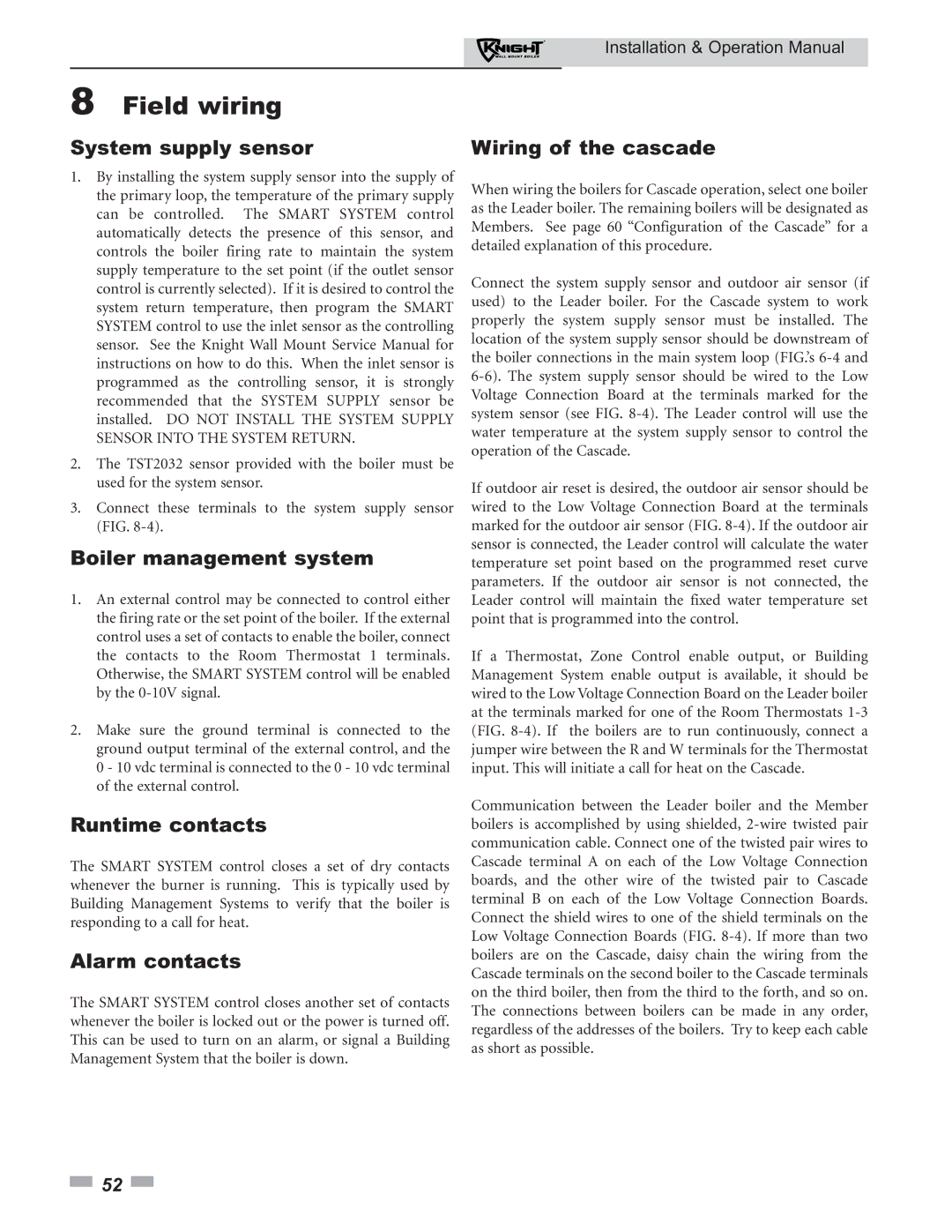51 specifications
Lochinvar 51 is an innovative and robust residential boiler system designed for high-efficiency heating needs. A popular choice among homeowners, the Lochinvar 51 stands out in the market due to its advanced features and eco-friendly technologies.One of the main features of Lochinvar 51 is its compact design, making it ideal for installation in limited space environments such as attics or closets. Despite its small footprint, it boasts a powerful heating capacity, suitable for varying home sizes. The boiler operates with a modulating gas burner that allows it to adjust its heat output according to the demand, ensuring efficiency and comfort throughout the day.
The Lochinvar 51 employs a cutting-edge heat exchanger made from stainless steel, which is highly durable and resistant to corrosion. This design not only enhances the boiler's performance but also increases its lifespan. The unit offers impressive AFUE (Annual Fuel Utilization Efficiency) ratings, showcasing its capability to convert a significant portion of fuel into usable heat, thus minimizing energy waste and reducing heating costs.
Technologically, the Lochinvar 51 is equipped with advanced control systems that facilitate precise temperature management. The intuitive interface allows homeowners to easily set their desired temperature and monitor the system’s performance. Additionally, the integration of outdoor reset technology helps optimize energy consumption by adjusting the water temperature based on outside weather conditions, leading to further energy savings.
Safety features are also paramount in the Lochinvar 51. It includes built-in safeguards that monitor pressure and temperature, automatically shutting down the system in case of any irregularities. This not only protects the boiler but also ensures peace of mind for users.
Moreover, Lochinvar 51 supports compatibility with smart home systems, providing homeowners with remote control capabilities via mobile devices. This innovative feature enhances user convenience, allowing for easy adjustments and monitoring of the heating system from anywhere.
In conclusion, the Lochinvar 51 is an exceptional choice for homeowners looking for a reliable, efficient, and technologically advanced heating solution. With its impressive heating capacity, durable design, and innovative control features, it sets a high standard in residential boiler performance, making it a top contender in today’s market.
